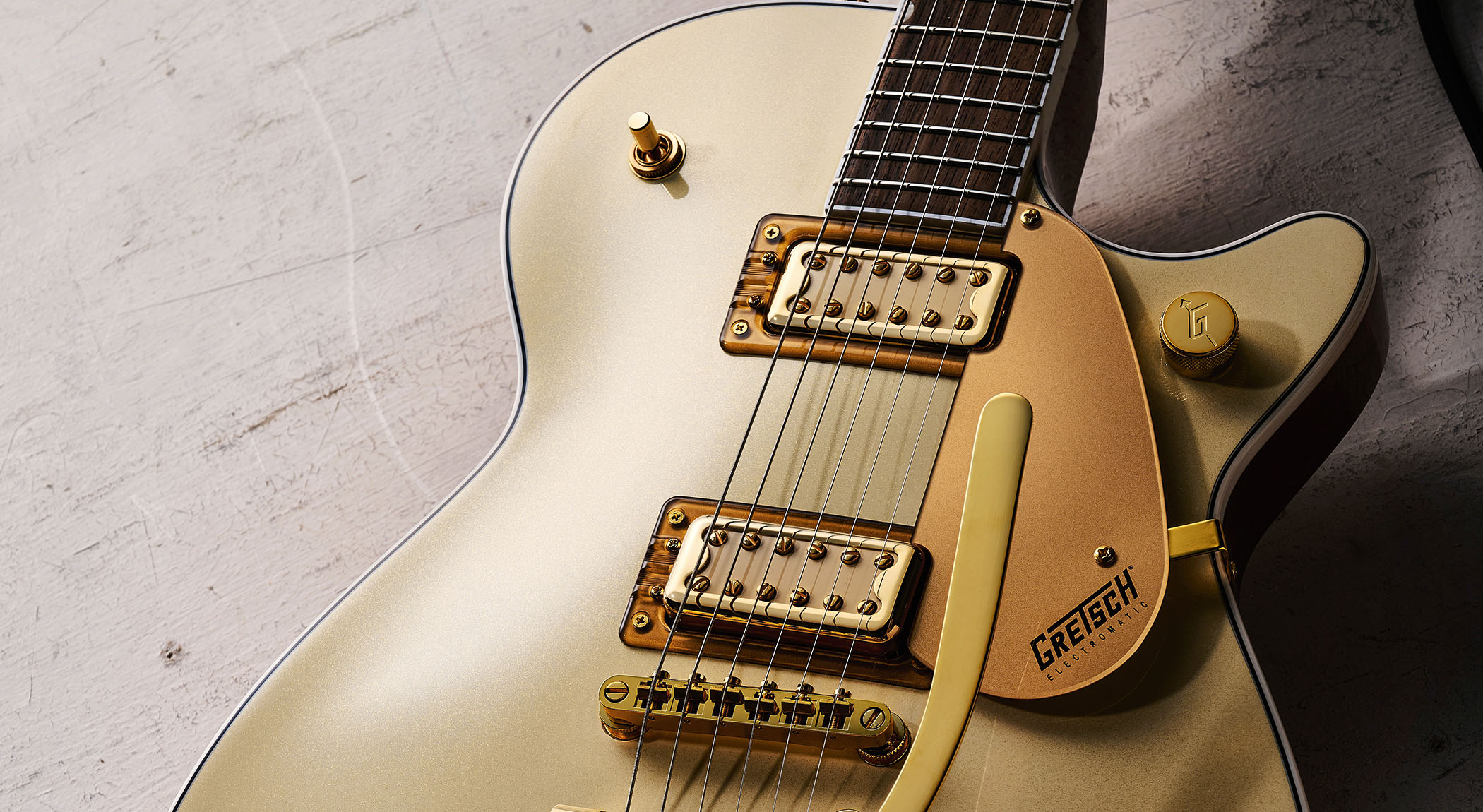Guitar World Verdict
Here’s a great-looking guitar that’s just a few minor tweaks away from being as good as its style suggests. Should we have to do that with a new guitar? Well, perhaps that’s a discussion for another day. In our experience, expecting any relatively low-end guitar to arrive out of its box perfectly set up to your tastes and tour‑ready is a big ask.
Pros
- +
Classy looks.
- +
Tidy build.
- +
Strong classic ’Tron voices.
- +
Good weight, feel and playability.
Cons
- -
Needed some saddle and nut fettling to maximise tuning stability.
- -
No gigbag.
You can trust Guitar World
What is it?
There’s always been a show-off element to Gretsch guitars and this new Pristine Jet is no exception. It comes in two blue metallics as well our rather classy top-edge bound White Gold, which looks like a 50s Cadillac cream.
Look closely, however, or under different lighting, and you’ll see fine gold-coloured metal flakes that tie in perfectly with the gold-plated hardware.
Made in China, it tops the current Jet line-up in the Electromatic range and is the only one with that gold-hardware, and the only non-signature in the Electromatic range that doesn’t have an easy-to-forget model number.
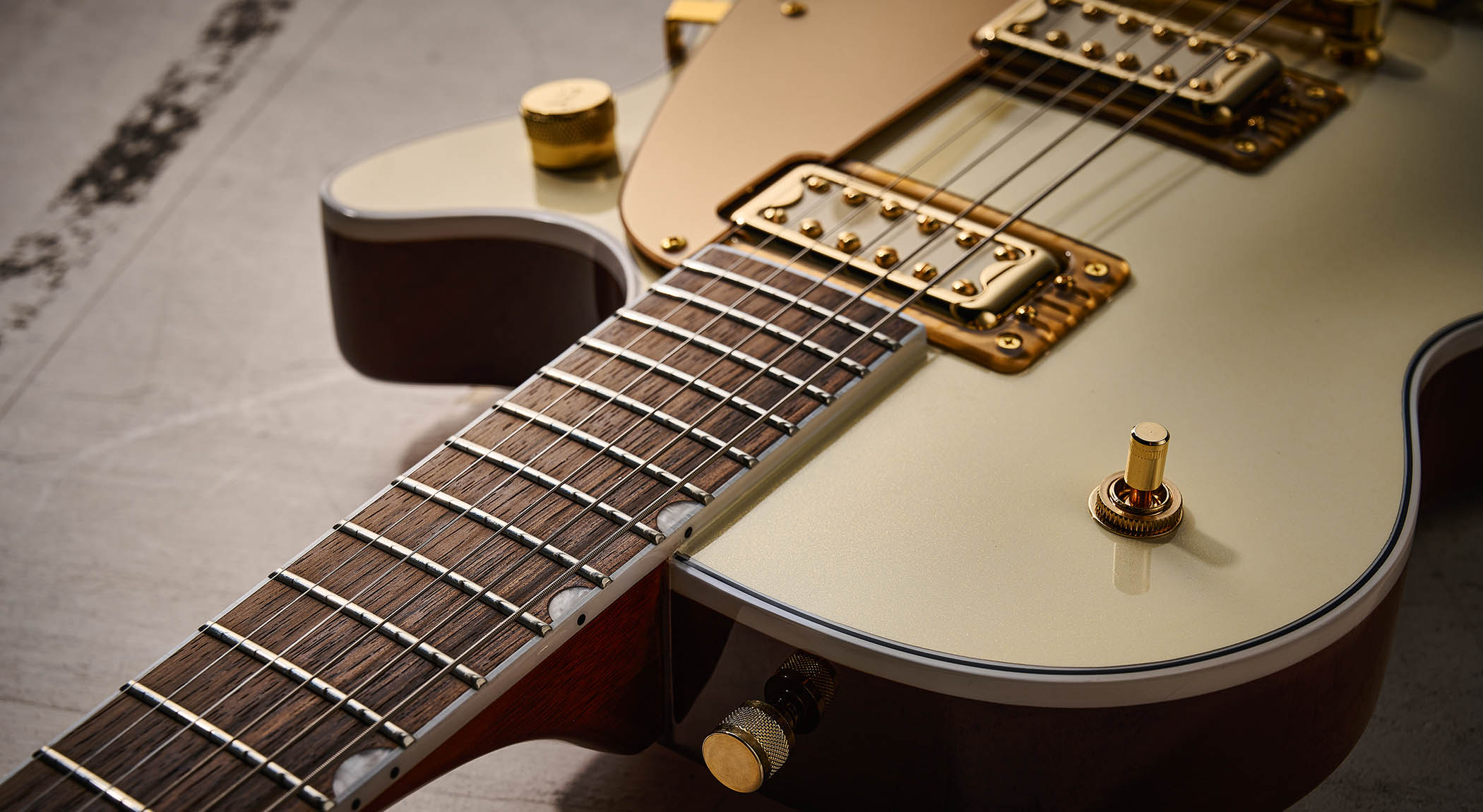
It’s also the only Jet with FT-5E Filter’Trons, which were added to the arsenal in 2022, it seems with the introduction of the Electromatic Classic Hollow Body models. Gretsch describes them as having “huge full-bodied punch, classic chime and enhanced presence, clarity and note definition”.
So, while they don’t feature on any other Electromatic Jets, they do appear on guitars such as the large single-cut G5420T and the double-cut G5422T.
Perhaps they’re included here to provide a little more classic Filter’Tron vibe over the more contemporary-sounding Black Top Broad’Trons seen on the majority of the Electromatic Jet models.
Specs
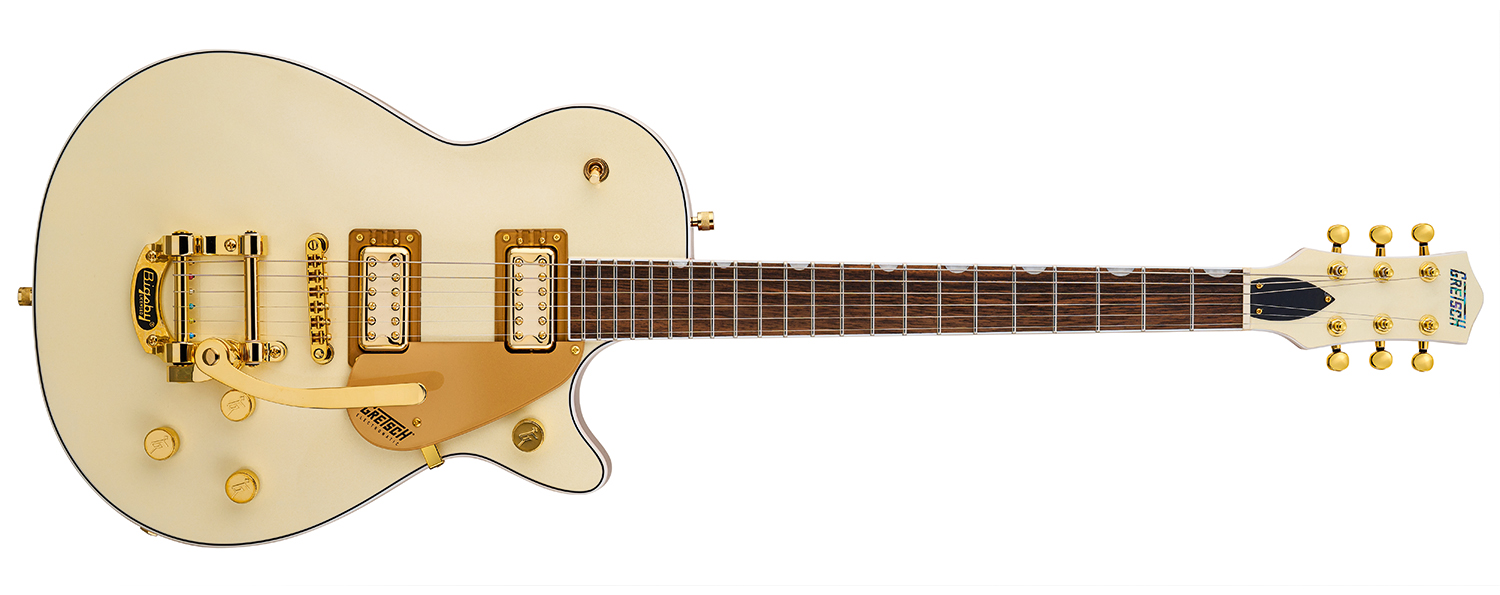
Launch price: $$749/£699/€749
Made: China
Type: Single-cutaway chambered body electric
Body: Chambered mahogany with maple top
Neck: Mahogany, ‘thin U’ profile, glued-in
Fingerboard: Laurel, pearloid Neo-Classic thumbnail inlays, 320mm (12.5”) radius
Scale length: 24.6” / 625mm
Nut/width: Synthetic/43.9mm
Frets: 22, medium jumbo
Hardware: Adjusto-Matic-style bridge, Bigsby B50 vibrato, enclosed tuners – gold-plated
String spacing at bridge: 51.5mm
Electrics: 2x Gretsch FT-5E Filter’Tron humbuckers with cream inserts, 3-way toggle pickup selector, master volume, individual pickup voles, master tone control
Weight: 8.14lb/3.7kg
Options: No
Left-handed options: The Electromatic single-cut Jet range starts with the G5230T (£649) with Black top Filter’Trons, Bigsby and chrome hardware. The other Pristine model, also available in this White Gold finish, is the double-cut with centre block with gold hardware at £899 featuring P-90E single coils with cream inserts
Finishes: White Gold (as reviewed), Mako, Petrol – gloss polyurethane
Cases: No
Contact: Gretsch
Build quality
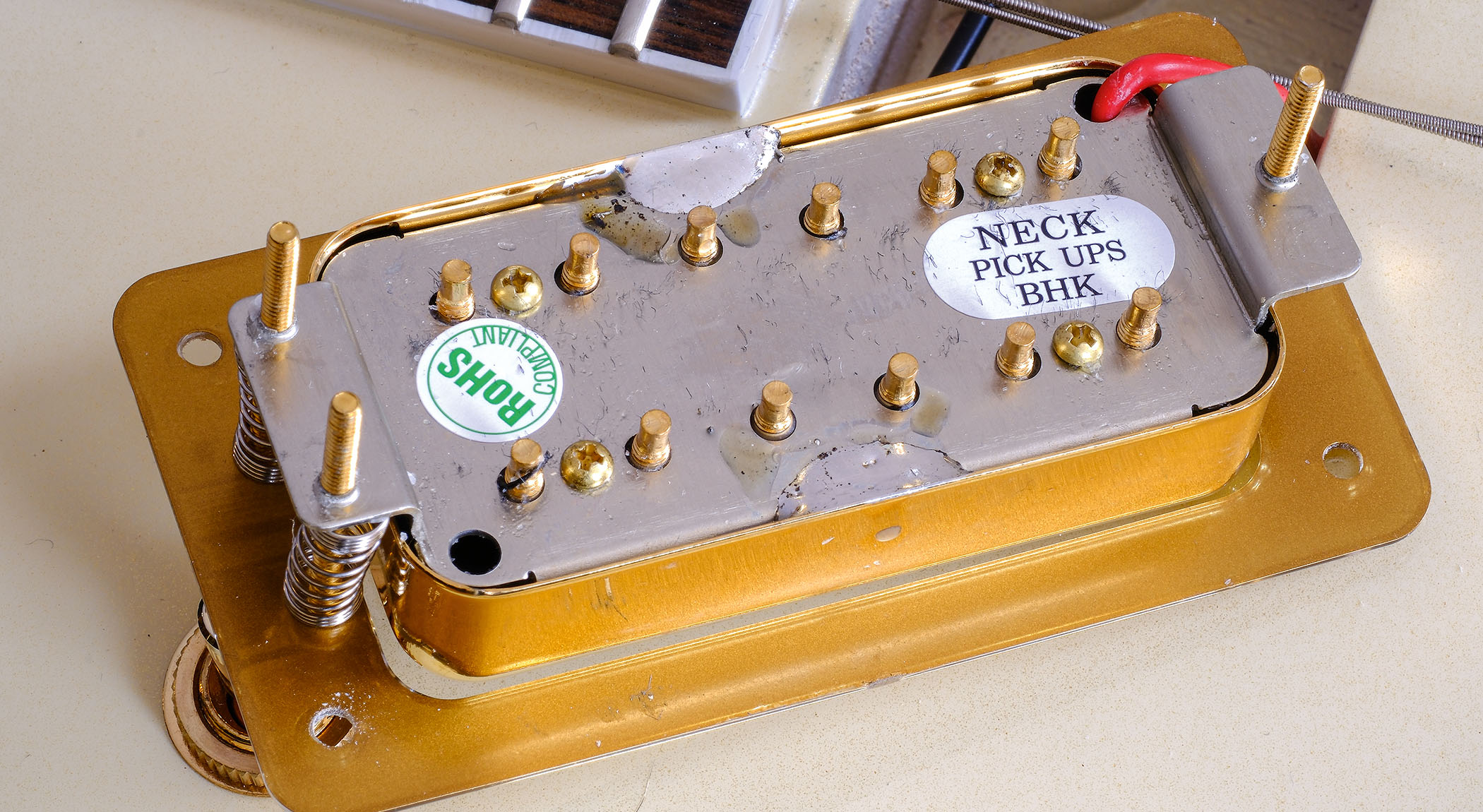
Build quality rating: ★★★1/2
In Gretsch terminology, the Jet falls into the ‘Solid Body’ category, although the body here – a four-piece spread of mahogany topped with a solid carved maple top – is quite heavily chambered, as Gretsch states, with the back cut out to leave a centre section that stops just behind the licensed Bigsby B50.
The body measures 340mm (13.4 inches) wide and 453mm (17.8 inches) long, and overall it’s pretty Les Paul-like, with a depth of 60mm in the centre of the body and 48mm at the rim.
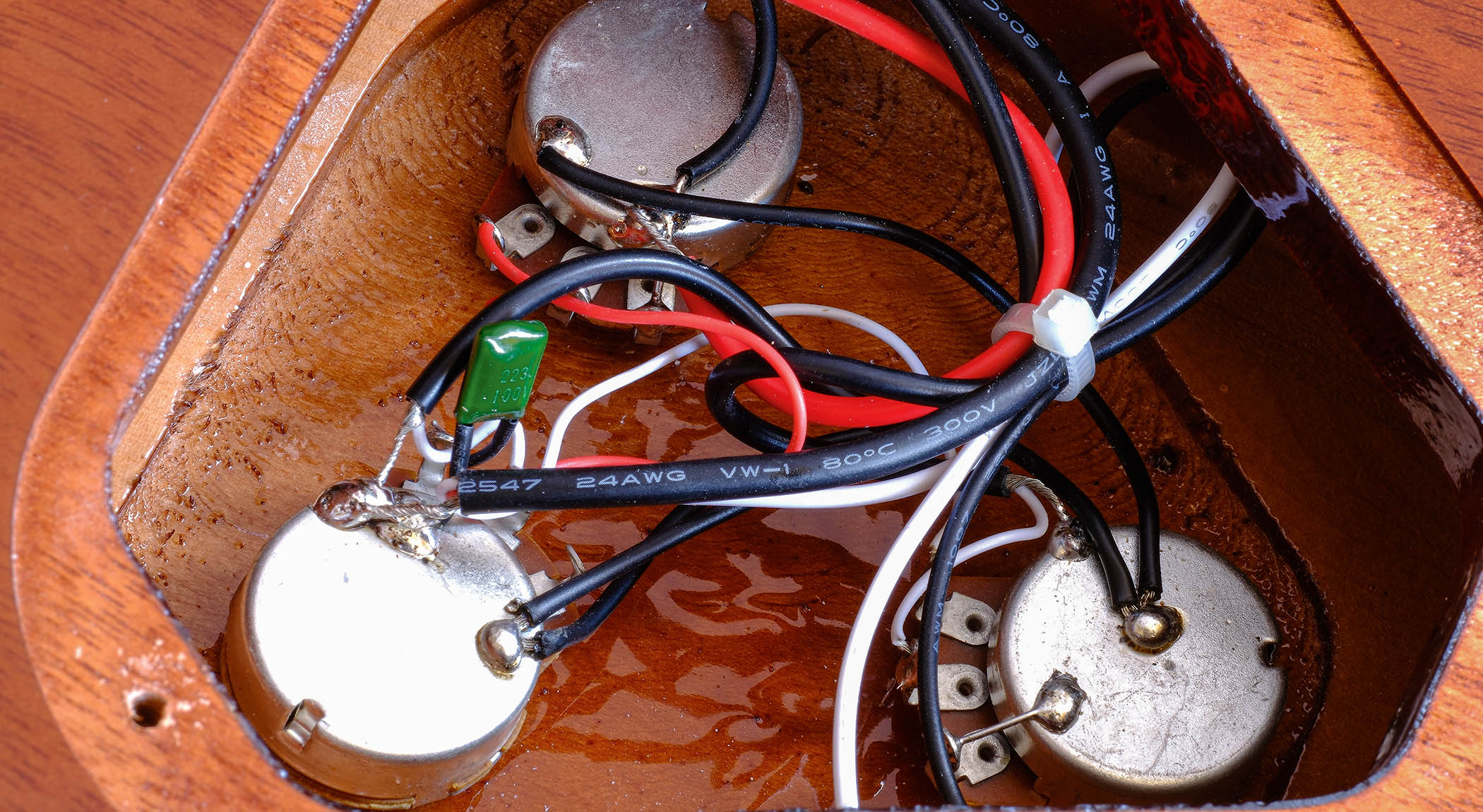
The neck is three-piece with a heel stack and headstock splice augmenting the main one-piece shaft, while the light brown fingerboard is laurel with tidy single-ply binding, those Neo-Classic thumbnail inlays, and good fretting from a pretty big wire on the 305mm (12-inch) radius face.
Typically, Gretsch quotes the scale length as 625mm (24.6 inches), which is more like the shorter Gibson scale than the true 629mm (24.75-inch) scale used by Epiphone, for example.
As ever, we get all the funky Gretsch hardware such as those distinct control knobs and strap buttons, although the un-logo’d tuners are more generic. Overall, and by design, it’s quite a looker.
The setup is good overall, but the tune-o-matic-style bridge in front of the Bigsby can cause some tuning snags. As you bend, the vibrato arm down by the bridge rocks slightly forwards, and to get things stable we needed a little saddle-notch filing and some lube. There was also a slightly tight D string nut groove that needed some similar minor fettling.
Playability
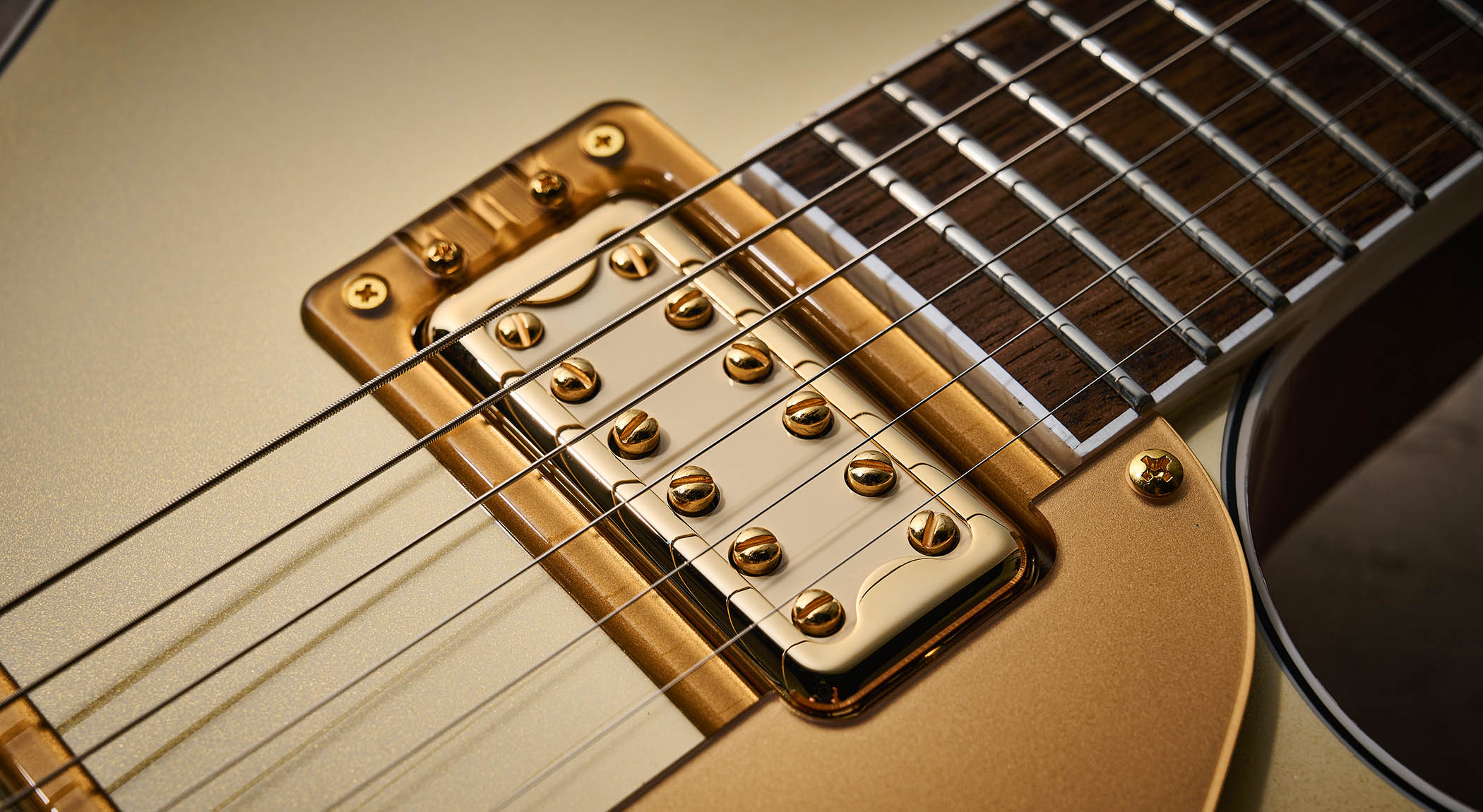
Playability rating: ★★★★☆
With a slightly broader Les Paul-styled body it’s considerably less bulky than those classic Gretsch hollowbodies
At 3.7kg (8.14lb), our Jet feels more solidbody than hollowbody, but it’s a good weight for the style, and with a slightly broader Les Paul-styled body it’s considerably less bulky than those classic Gretsch hollowbodies.
Gretsch still calls the neck profile a ‘thin U’, which is a bit off-putting, as we’ve mentioned before, because it’s actually a rather good palmful. A ‘full C’ might be a better description as it’s not overly thin at all; it has a width of 43.9mm at the nut (with string spacing of 34mm) and a depth of 21.4mm at the 1st fret and 22.5mm by the 11th before it flows into the pretty classic, if slightly flat-faced, heel.
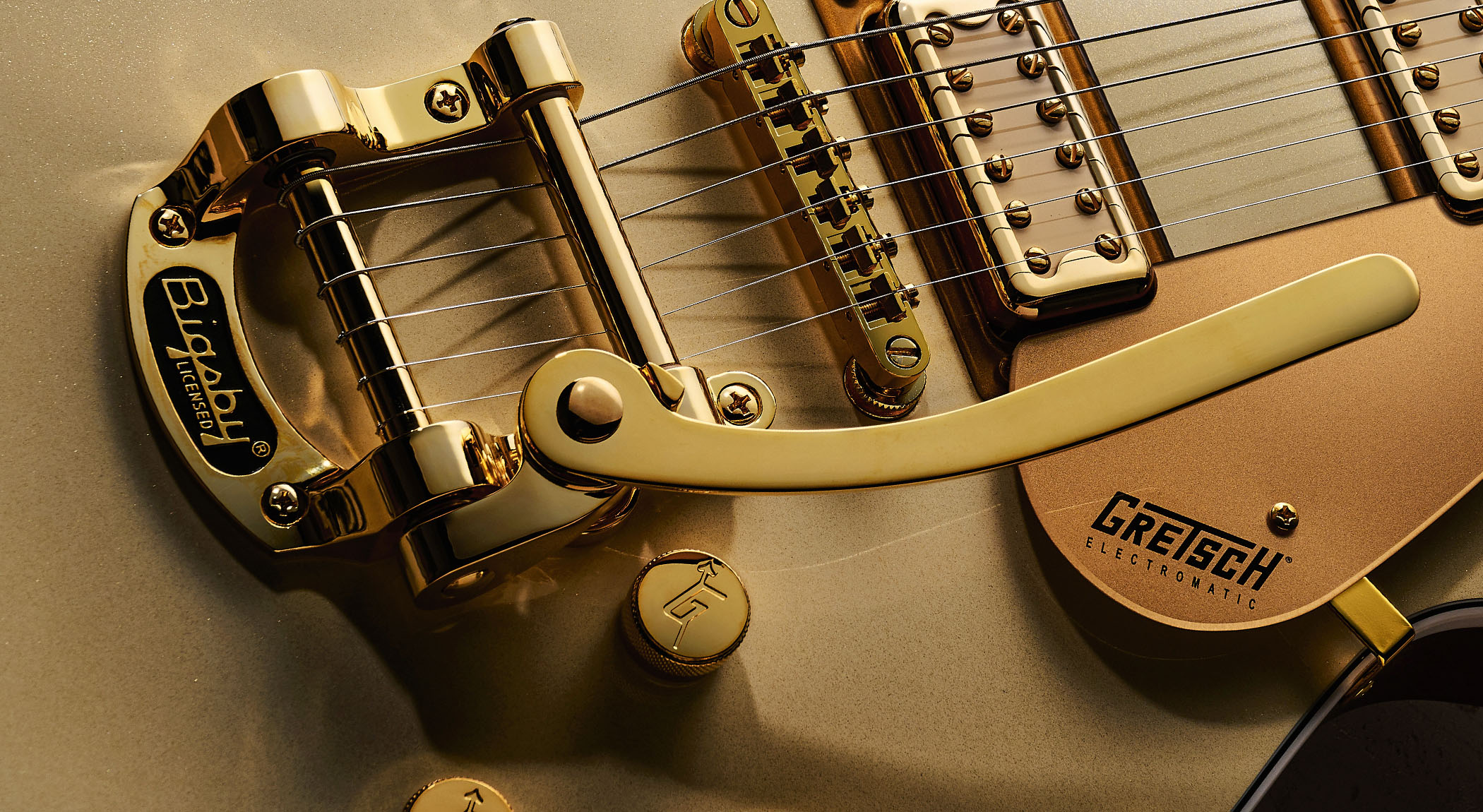
Like a Les Paul, the single cutaway and that heel don’t exactly make it a top-fret shredder, but with such a retro-aimed guitar that’s of little consequence.
Mind you, the fretwire is quite chunky, albeit not overly high (approximately 2.7mm wide by 1mm high), but it’s well installed and very nicely polished.
Sounds
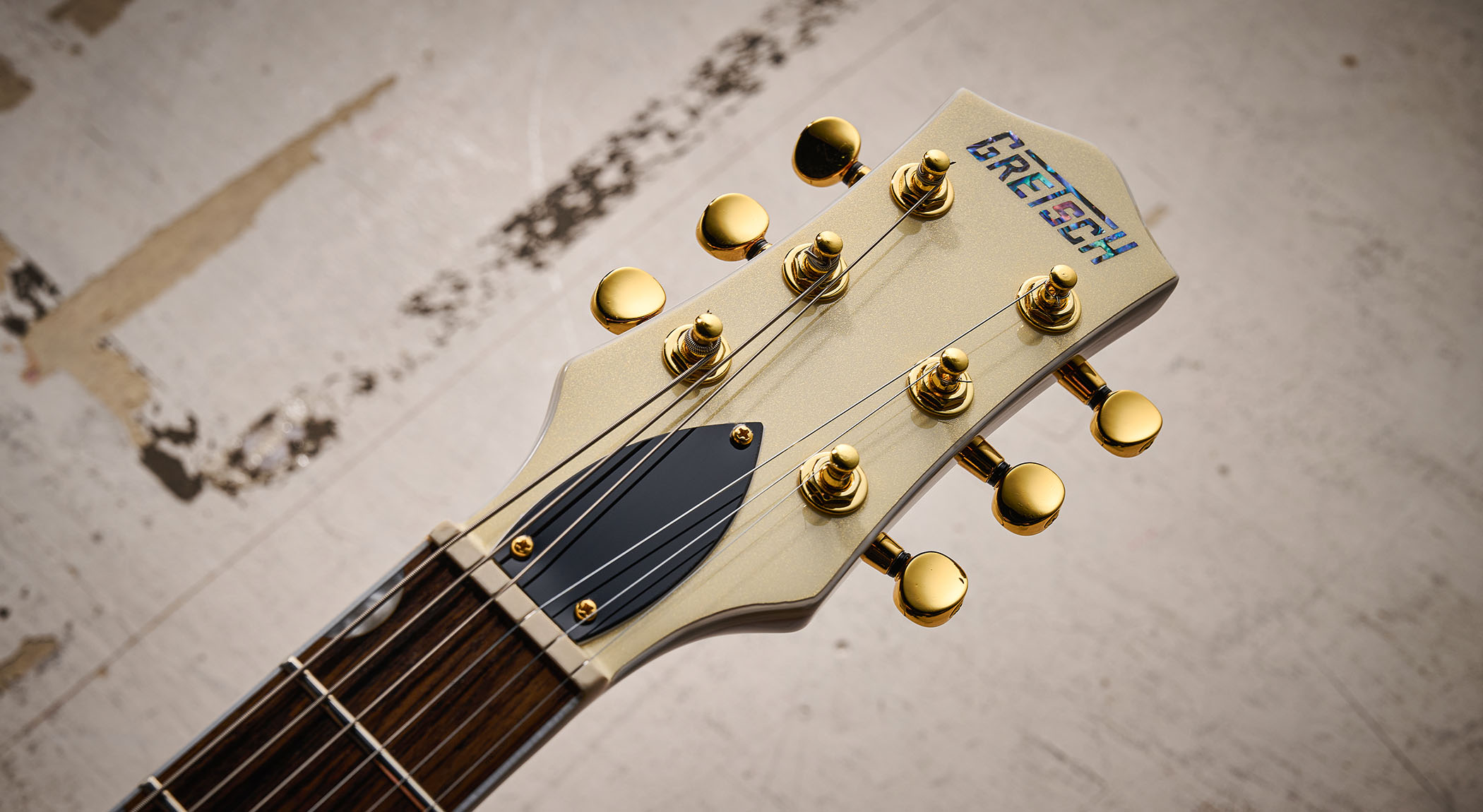
Sounds rating: ★★★★☆
With all the controls full up there’s little to dislike about the sounds we hear and quite a lot to applaud. There are three quite distinct Filter’Tron flavours, all well-balanced from the off. And with a simple clean amp, reverb and slapback, you can’t blame the guitar if your rockabilly licks don’t sound authentic.
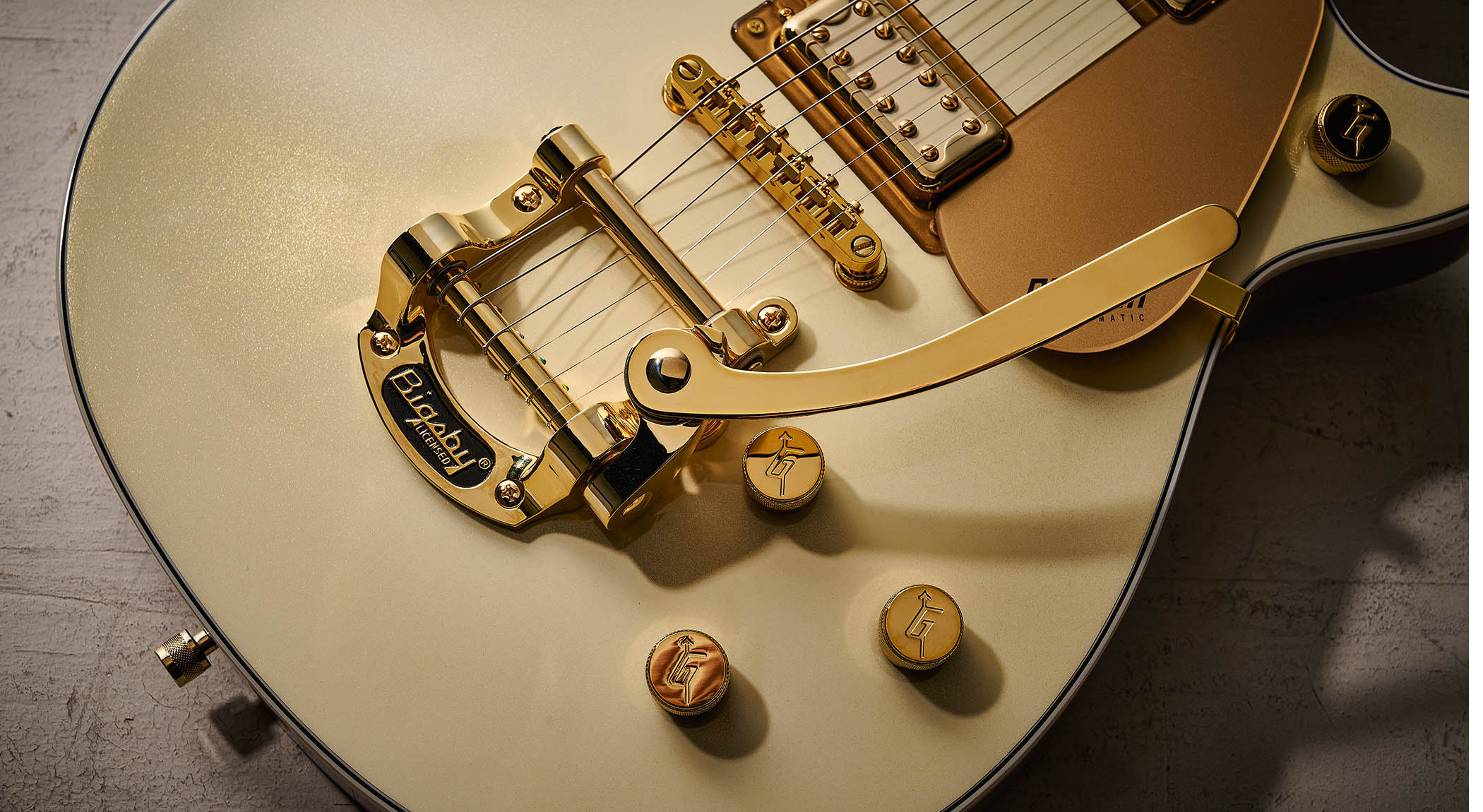
The actual controls aren’t as responsive as you might expect. The pickup volume tapers feel a bit slow, as does the tone
Add a little grit and, again, we have no complaints. It’s a little more polite than our reference TV Jones Classic-equipped PRS S2 Semi-Hollow, although that’s easily compensated for with a bit more level and a slight treble lift from our test amps.
The actual controls aren’t as responsive as you might expect. The pickup volume tapers feel a bit slow, as does the tone, and while the same can be said for the master volume, it’s that control that gets the most use since it’s out of the way of the Bigsby and retains the bite as you pull it back.
That said, keeping the master volume up full and just pulling back the pickup volumes does round the high-end subtly, which is handy with gainier amp voices
Verdict
Here’s a great-looking guitar that’s just a few minor tweaks away from being as good as its style suggests.
Those FT-5E Filter’Tron humbuckers really are special
Should we have to do that with a new guitar? Well, perhaps that’s a discussion for another day. In our experience, expecting any relatively low-end guitar to arrive out of its box perfectly set up to your tastes and tour‑ready is a big ask.
Conversely, some minor fettling (DIY or pro) can quickly transform the mediocre into special. And aside from being a looker, this guitar’s construction and those FT-5E Filter’Tron humbuckers really are special. Welcome to the new Jet age.
| Test | Results | Score |
|---|---|---|
| Build quality | A few adjustments needed to support tuning stability. | ★★★1/2 |
| Playability | Neck profile might be misadvertised as a Thin U but it is comfortable and those frets feel nice. | ★★★1/2 |
| Sounds | Excellent pair of Filter’Trons | ★★★★1/2 |
| Overall | A beautiful electric that just needed a little TLC to make properly special. | ★★★★☆ |
Also try
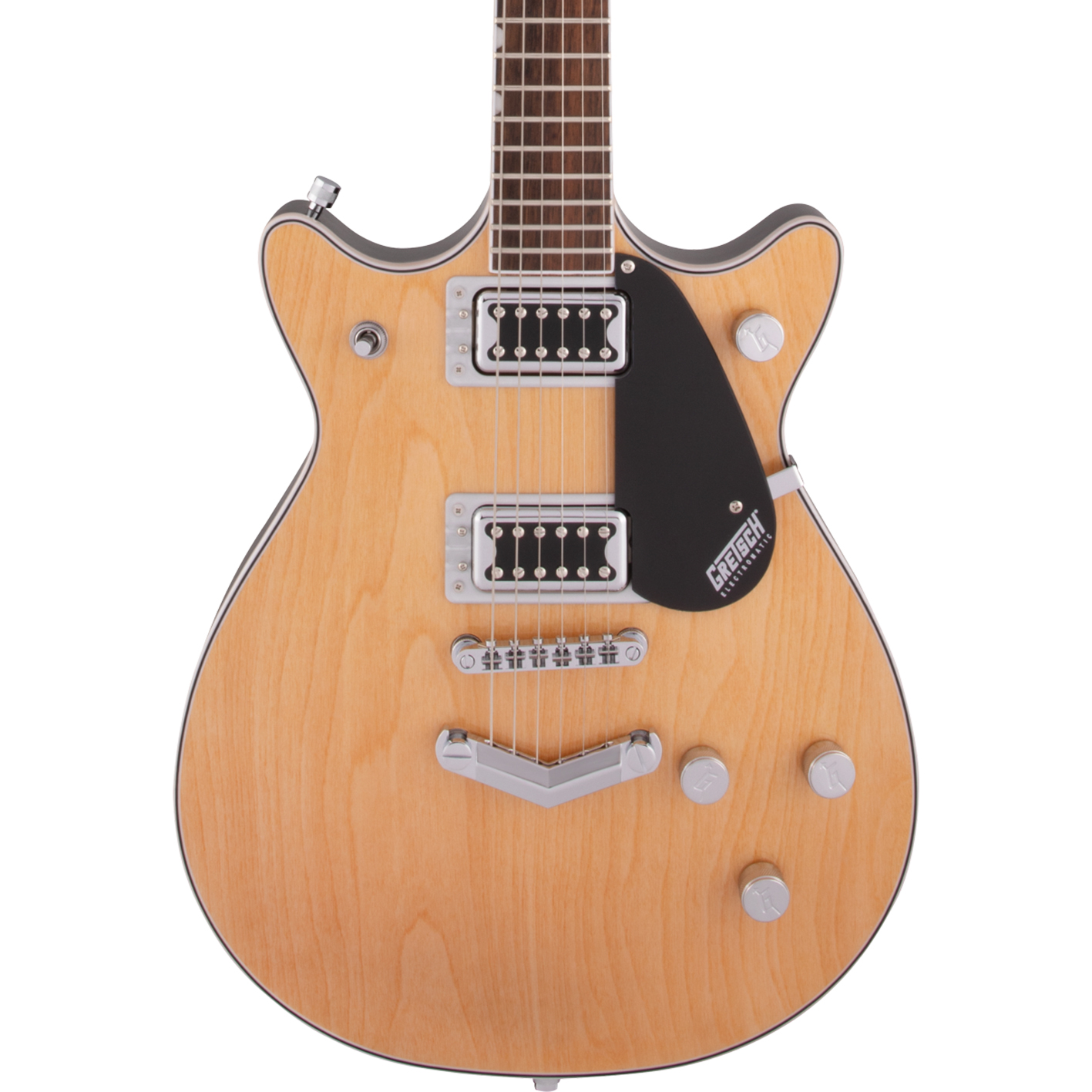
($499/£439/€549)
"Feels reassuringly contemporary for a guitar that's all about finding tones that predate the color TV."
Read our review
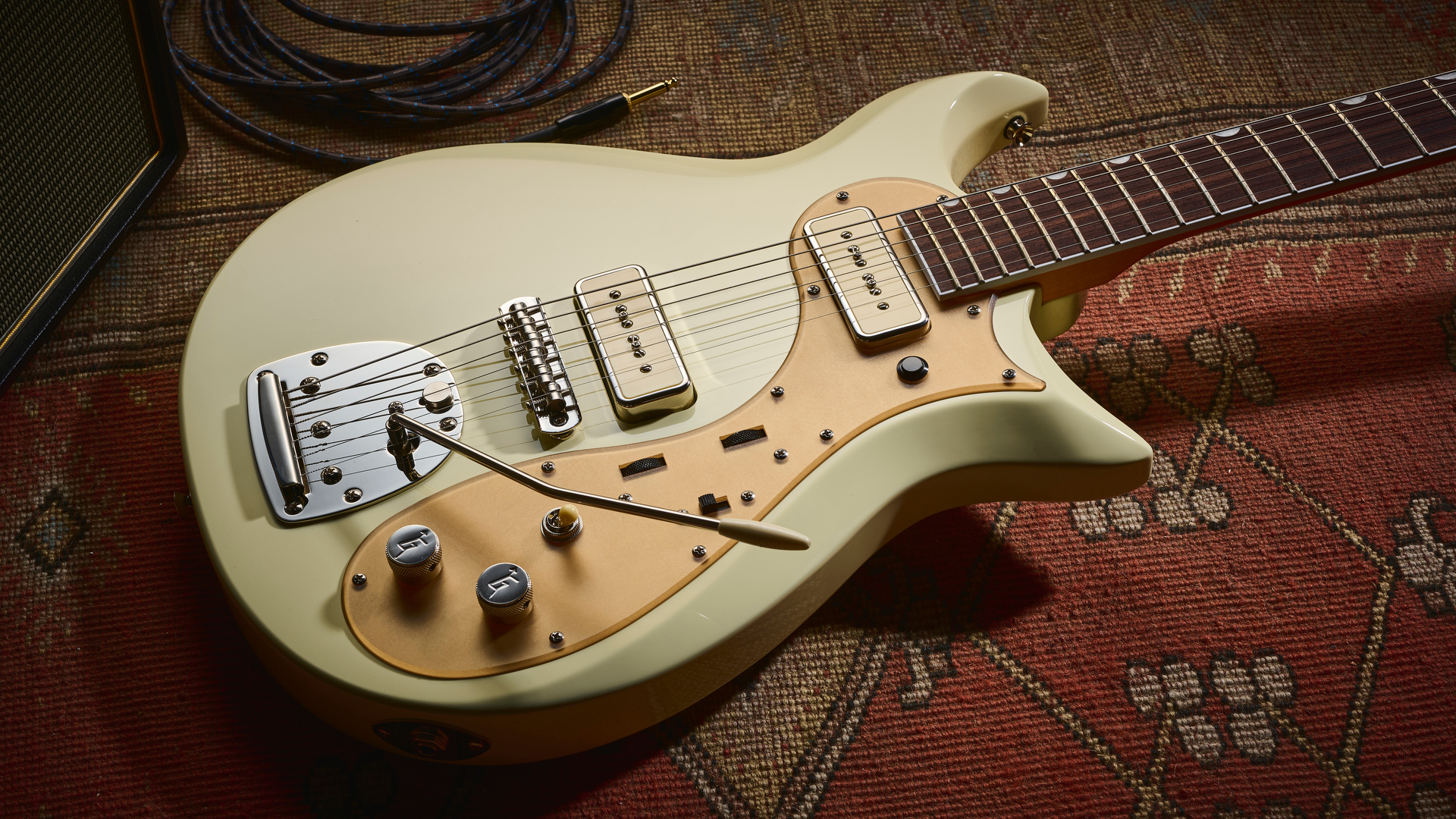
($699/£699/€799)
"Gretsch’s best release of the year, Jack Antonoff’s signature revives the long-forgotten Princess and combines it with some Jazzmaster style and flair."
Read our review
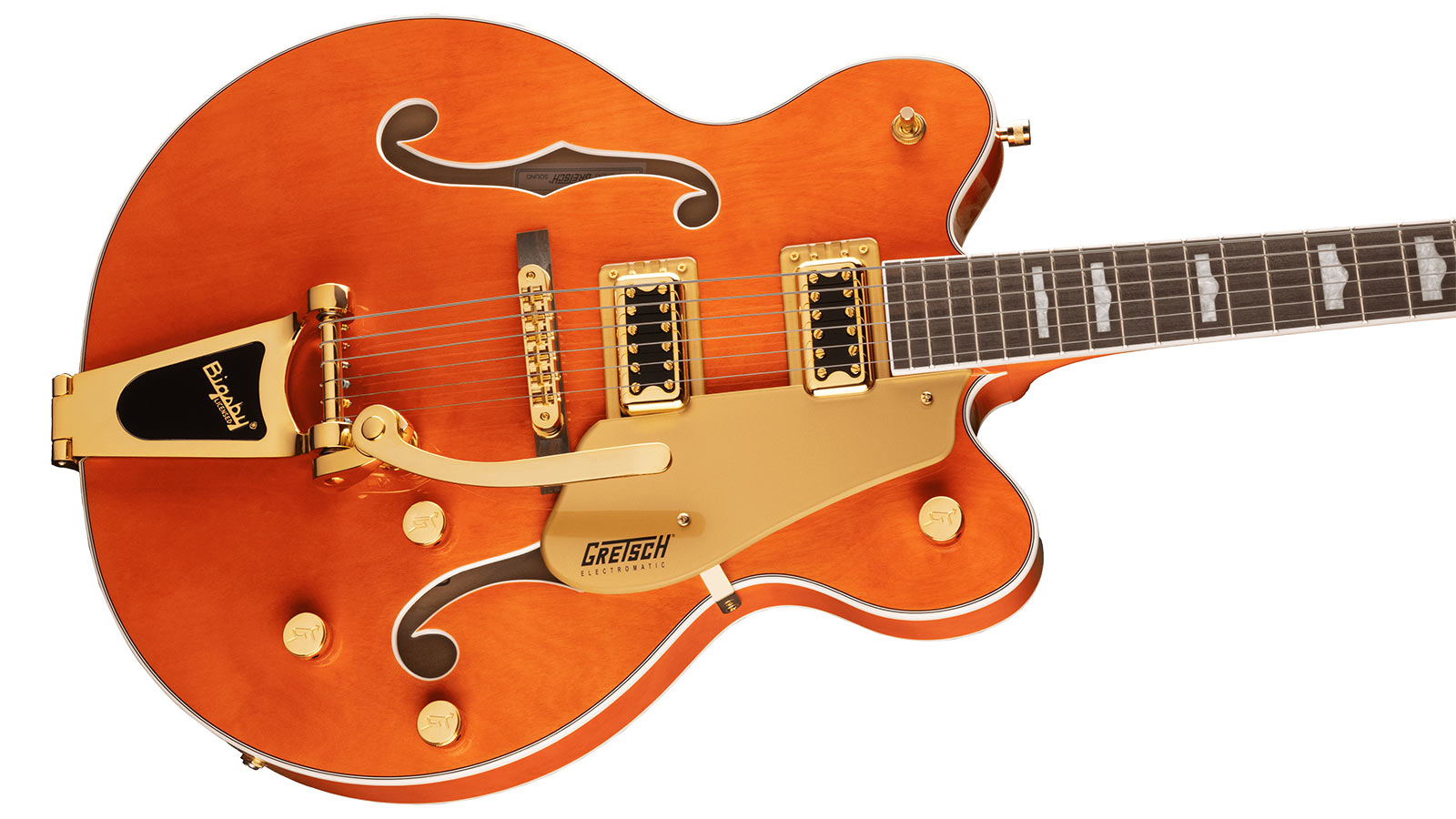
($899/£849/€949 street)
"A super-charged Gretsch with snappy playability, solid construction, and plucky Filter’Tron pickups to unleash a massive roar."
Read our review
Hands-on videos
Gretsch
Andertons

Dave Burrluck is one of the world’s most experienced guitar journalists, who started writing back in the '80s for International Musician and Recording World, co-founded The Guitar Magazine and has been the Gear Reviews Editor of Guitarist magazine for the past two decades. Along the way, Dave has been the sole author of The PRS Guitar Book and The Player's Guide to Guitar Maintenance as well as contributing to numerous other books on the electric guitar. Dave is an active gigging and recording musician and still finds time to make, repair and mod guitars, not least for Guitarist’s The Mod Squad.
“After I made the RD with Epiphone I found it wasn't actually that comfortable to play live”: Bring Me the Horizon’s Lee Malia is no stranger to signature offsets – but he wasn’t too fond of his first
“Tom would say, ‘Play your guitar with a car key.’ It was very experimental”: Little Feat's Fred Tackett recalls Tom Waits' left-field approach to guitar playing – and his one-of-a-kind studio sessions
I spent way too long looking through all 372 deals in the Thomann Easter sale – here are the 5 I’d buy
